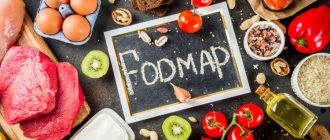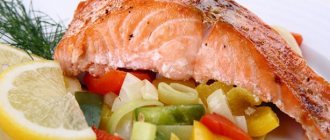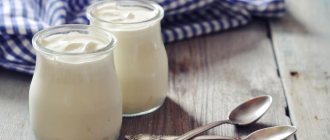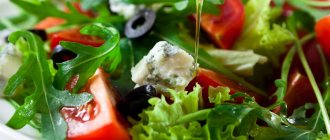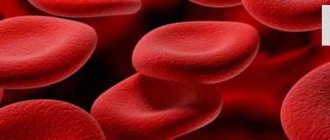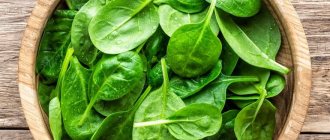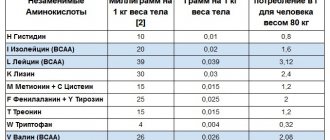Vegetables
Products from this category have a complex positive effect on the body, saturating it with a number of nutritional components necessary for the full development of the body.
Zucchini
One normal-sized fruit contains no more than 7 g of carbohydrates. When preparing side dishes for meat dishes, it is recommended to use these fruits, cut into strings with special devices, as an alternative to spaghetti.
Finely grated zucchini can be used when preparing potato pancakes (replace potatoes with them). The product can also be added to the dough instead of flour.
A nutritious low-carbohydrate snack is prepared from zucchini, recommended for consumption when losing weight, according to the following algorithm:
- The top and bottom edges are cut off from the fruit.
- The zucchini is cut into wide, elongated strips.
- Place arugula or a piece of smoked salmon on one end of the strip, wrap the product like a roll, after which it is ready to eat.
In addition to the low carbohydrate content, zucchini is famous for the presence of the following components:
- magnesium;
- potassium;
- vitamin B6;
- ascorbic acid (vitamin C).
Swiss chard
There are 1 g of carbohydrates per 1 cup of product. The product is suitable for steaming or frying. When preparing rolls or tacos, leaves can be used to replace high-carbohydrate tortillas.
Swiss chard is rich in potassium, which reduces the risk of developing cancer and cardiovascular diseases.
Celery
The stem of the plant contains 1 g of carbohydrates. The low content of these substances in the vegetable is due to the fact that it consists of 95% water. The product is cut into slices and added to the salad or nut butter is spread on it. The result is a nutritious snack with a minimal carbohydrate content.
Celery is a source of vitamin K, which is involved in calcium absorption and strengthening the skeletal system.
Cauliflower
One cup of the plant contains about 5 grams of carbohydrates. When boiled, the vegetable is a worthy alternative to mashed potatoes with a much lower carbohydrate content. The product can also be used instead of the following foods:
- cheese;
- pizza;
- pasta;
- creamy soups.
Cauliflower is used instead of rice or millet porridge. To do this, you need to run a head of cauliflower through a food processor.
Like all members of the Cruciferous family, cauliflower can provide the human body with the necessary amount of antioxidants.
Cherry tomato
Carbohydrate content: 6 g per 1 cup. Cherries differ from ordinary tomatoes in their reduced size and higher taste. It is recommended to consume them either fresh or processed with vegetable oil and baked in the oven at a temperature of about 200C.
The product is a source of lycopene, which has a preventive effect against the development of cancer.
Products without carbohydrates in the diet menu for weight loss
The carbohydrate-free foods, list and nutrition facts table below, make up the majority of a person's diet on a carbohydrate-free diet. This method of nutrition is intended to be the gentlest method of nutrition, which allows you to get rid of excess weight without harm to health.
No carbohydrate diet
It is prohibited to use a carbohydrate-free diet as the main principle of nutrition.
With prolonged abstinence from carbohydrates, the body is susceptible to serious problems:
- deterioration of liver function;
- slowing down metabolism;
- the appearance of flatulence and constipation due to problems with the gastrointestinal tract;
- deterioration in general health due to a lack of vitamins contained in carbohydrate foods.
When choosing the optimal period for implementing the diet, you should consult a specialist.
A low-carbohydrate diet helps dramatically (subject to physical activity) weight loss
The rules of the Keto diet are simple:
- Consume no more than 20 g of carbohydrates per day (in the first week, then you can increase to 40 g).
- Moderate physical activity. You can do fitness, running or swimming.
- It is best to boil foods, stew without oil or steam.
- It is imperative to maintain water balance in the body. You need to drink 1.5 liters of pure liquid per day.
It is also necessary to exit the diet gradually. You can practice switching to a low-carb diet.
Vegetables
Vegetables you can eat on your diet:
| Product | Calorie content, kcal | Proteins, g | Fats, g | Carbohydrates, g | Description |
| Cucumber | 15 | 0,8 | 0,1 | 3 | The composition includes calcium, iron, iodine. Also rich in B vitamins, retinol and biotin. |
| Celery | 16 | 0,69 | 0,17 | 2,97 | Contains many fat-soluble vitamins (such as retinol and tocopherol), as well as ascorbic acid. |
| Radish | 17 | 0,68 | 0,1 | 3,4 | Radishes are rich in calcium, magnesium, potassium and phosphorus. |
| Zucchini | 16 | 0,6 | 0,3 | 3,4 | The composition includes retinol, phylloquinone, tocopherol. |
| Cauliflower) | 25 | 1,92 | 0,28 | 4,97 | Rich in vitamins A, E, C, K. |
| Tomatoes | 22 | 0,6 | 0,2 | 4,2 | Contains vitamin A, C, B, PP. |
| Onion | 41 | 1,1 | 0,1 | 9,34 | Rich in ascorbic acid, B vitamins, PP. |
Non-carbohydrate products (list of vegetables)
Calorie content and nutritional value are indicated per 100 g of fresh product.
Fruits
Fruits allowed for consumption during the keto diet:
| Products | Calorie content, kcal | Proteins, g | Fats, g | Carbohydrates, g | Description |
| Lemon | 34 | 0,9 | 0,1 | 3 | Contains a lot of ascorbic acid, calcium and magnesium. |
| Mandarin | 38 | 0,8 | 0,2 | 7,5 | Rich in useful elements: cobalt, silicon and potassium. |
| Plum | 46 | 0,7 | 0,3 | 10 | The composition includes retinol, beta-carotene, copper. |
| Grapefruit | 35 | 0,7 | 0,2 | 6,5 | Contains a lot of silicon, ascorbic acid and potassium. |
| Strawberry | 41 | 0,8 | 0,4 | 7,5 | The composition includes ascorbic acid, silicon and potassium. |
| Apple | 47 | 0,4 | 0,4 | 9,8 | Contains iron, potassium, chromium and iodine. |
Low-carbohydrate foods (list of fruits)
During a low-carbohydrate diet, it is recommended to limit the consumption of fruits, as they contain a large amount of sugar (carbohydrates).
Dairy products, oils and eggs
Dairy products, butter and eggs that can be consumed when losing weight:
| Product | Proteins, g | Fats, g | Carbohydrates, g | Calorie content, kcal | Description |
| Vegetable oil | 0 | 100 | 0 | 900 | Due to the high calorie content, it is recommended to limit oil consumption. |
| Kefir (1% fat) | 3 | 1 | 4 | 40 | Contains a lot of phosphorus, calcium, B vitamins. |
| Cottage cheese (5%) | 21 | 5 | 3 | 145 | Contains a lot of cobalamin, retinol and riboflavin, calcium. |
| Cheese | 11 | 2,5 | 3,8 | 81 | The composition includes a large amount of sodium, biotin and choline. |
| Milk (1%) | 3 | 1 | 4,7 | 40 | You can also use a low-fat product. |
| Light mayonnaise (30%) | 0,2 | 30 | 7 | 300 | Mayonnaise is rich in calories, so consuming it in large quantities is not recommended. |
| Egg white | 11,1 | 0,2 | 1 | 48 | The composition includes riboflavin, selenium, sodium and potassium. |
| Egg yolk | 16,2 | 31,2 | 3,6 | 354 | The yolk contains a large amount of retinol, choline, biotin, phosphorus, and selenium. |
For a low-carbohydrate diet, you should choose 1% kefir.
You can also consume milk products that contain no more than 1% fat.
Meat, fish and seafood
Meat, fish and seafood that are recommended to be consumed on a diet:
| Product | Calorie content, kcal | Proteins, g | Fats, g | Carbohydrates, g | Description |
| Shrimps | 85 | 17 | 1,2 | 1 | Shrimp can be boiled, steamed or pan-fried. |
| Pollock | 72 | 15,9 | 0,9 | 0 | The composition includes chromium, iodine, potassium and cobalamin. |
| Chicken liver (boiled) | 73 | 9,8 | 2,9 | 2 | Liver is rich in retinol, iron, potassium and cobalamin. |
| Mussels | 77 | 11,5 | 2 | 3,3 | The composition includes cobalamin, manganese, sodium and selenium. |
| Veal (back) | 90 | 19,8 | 1,2 | 0 | The product is rich in potassium, phosphorus, copper and cobalamin. |
| Seabass | 103 | 16,5 | 1,5 | 0 | The fish can be baked in the oven or grilled. |
| Chicken (white meat) | 114 | 23,2 | 1,7 | 0 | The product contains B vitamins, selenium, phosphorus, magnesium and sodium. |
Meat must be in the diet to maintain normal functioning of the body.
Fruits
The products are high in nutrients and low in carbohydrates.
Apricots
One normal-sized fruit contains about 4 g of carbohydrates. Fruits are consumed both fresh for quick saturation, and added in a crushed state to oatmeal, yoghurt, and salads in order to add sweetness to food.
Apricot pulp contains a significant amount of beta-carotene. This antioxidant has a positive effect on brain functioning.
Strawberry
A cup of fruit contains no more than 11 g of carbohydrates. Of all the berry crops, cranberry contains the least amount of sugar, which significantly increases its health benefits and reduces the level of calories.
Strawberries are among the foods that are sources of ascorbic acid. This component strengthens the immune system and protects the body from colds.
Avocado
The fruit contains about 4 g of carbohydrates. Most of these carbohydrates are in the form of dietary fiber, which cannot be absorbed by the intestines. The product is almost completely sugar free.
Avocado is characterized by the presence in its composition of a significant amount of monounsaturated fatty acids, which have a positive effect on the condition and functioning of the heart.
Red grapefruit
A cup of fruit contains about 18 grams of carbohydrates. The product contains 20% less sugar than oranges. The taste of the fruit is quite sour, so you should not try to overpower it with sugar.
One of the components of grapefruit is ascorbic acid.
Meat and fish
Products from this category are considered the most satisfying and nutritious, which, given the low amount of carbohydrates, opens up broad prospects for use in dietary nutrition.
Som
This fish is completely free of carbohydrates. Relatively cheap products allow you to supply your muscles with pure, high-quality protein. You can steam catfish fillets, bake them on the grill or in the oven, or fry them in a frying pan.
Fish contains vitamin B12, which is necessary for the normal functioning of the nervous system.
Chicken drumstick
100 g contains 0.63 g of carbohydrates. The advantages of this part of the chicken over regular chicken fillet are as follows:
- it is more juicy;
- does not dry out during cooking;
- characterized by rich taste.
However, the skin contains a significant amount of fat, so it is recommended to cut it off when used in dietary foods.
Chicken drumstick can saturate the body with selenium and proteins.
Pork tenderloin
This product contains no carbohydrates. Pork tenderloin is characterized by excellent taste and high juiciness, as well as low cost. The ratio of proteins to fats is 6:1, which makes it an indispensable component of dietary nutrition.
When purchasing prepared tenderloin, you should refrain from purchasing meat with seasonings. This measure will prevent salt and other undesirable ingredients from being included in the menu.
In addition to its high protein content, pork tenderloin is characterized by the presence of thiamine, a B vitamin that promotes accelerated energy production in the body.
Roast beef
Carbohydrate level: 0.36 g per 100 g of product. It is recommended to eat food for breakfast, preparing a low-carb dish according to the following recipe:
- Several pieces of roast beef are wrapped in cabbage or beet leaves.
- Add Dijon mustard, avocado, red pepper or cheese to taste.
Beef roast beef contains a type of iron that is absorbed by the body and can normalize the functioning of the muscular system.
Canned pink salmon
1/2 can has zero carbs. The product is a good source of protein, completely free of carbohydrates. Unlike a number of other fish, pink salmon does not contain mercury or other toxic substances.
Eating this fish allows you to supply the body with omega-3 fatty acids, which intensify protein production in the muscles and reduce pain after exercise.
Ground turkey
The carbohydrate content is 0.48 g per 100 g of meat. This product is an excellent source of healthy proteins in the complete absence of carbohydrates. Minced meat is used in preparing meat dishes or burgers. Using minced meat based on white meat allows you to further reduce the calorie content of the product.
The growth of muscle mass can be intensified due to the action of amino acids contained in minced turkey.
Sirloin steak
The product contains no carbohydrates and is suitable for saturating the body with proteins. The product is widely used in pickling, after which it becomes even more tender and soft. The nutritional value is higher for those steaks that are prepared from plant-fed beef.
Steak is a source of creatine, which promotes energy production.
Moose meat
There are 0 g of carbohydrates per 100 g of product. This type of meat is considered a delicacy, however, recently it is increasingly found on store shelves.
When elk graze on plant-based pastures, their meat accumulates more omega-3 fats than meat from farmed animals fed corn or soy.
Types of low-carbohydrate diets. Rules and principles
Diets with limited carbohydrates are popular among sports nutrition enthusiasts. A diet is considered low-carbohydrate or low-carbohydrate when carbohydrates make up less than 25% of daily calorie intake. When the intake of carbohydrates into the body decreases, after a couple of days the body switches to a reserve source of “fuel” for energy production – fats.
This disruption of metabolic processes is called ketosis. The body begins to release energy from ketone bodies, which are found in fat. In order for the keto diet (another name for a low-carbohydrate diet) to be as comfortable as possible, without negative health consequences, it is important to follow certain recommendations.
List of foods without carbohydrates
- at the beginning of the diet, the amount of incoming carbohydrates is reduced by 20%, so as not to cause a malfunction in the body’s metabolism due to a sharp reduction in the intake of carbohydrate products;
- The diet cannot be maintained for a long time - limiting carbohydrates leads to an imbalance in the acid-base balance. It is not recommended to maintain a keto diet for more than 2-8 weeks, as oxidation in the body and slagging will increase;
- before starting, you should consult with a nutritionist or fitness nutrition specialist;
- It is advisable to take additional vitamin complexes;
- The drinking regime must be established, fluid intake must be sufficient;
- You should listen to how you feel, the smell of acetone, fatigue, and dizziness. If such symptoms occur, it is prohibited to continue the diet.
There are 3 types of low-carbohydrate diet:
- Constant.
- Circular.
- Power.
Constant
It involves limiting carbohydrate foods constantly, eating in small portions, with plenty of water between meals. The main products are cottage cheese, vegetables and fruits, poultry fillet. It is important to ensure that the total number of meals per day is 6 times, and the intervals between them are no more than 2 hours. During these intervals, drink liquid; you can add lime juice and a little honey to the water.
With a constant carbohydrate-free diet, the body receives a lot of protein and fat. Such a restriction of carbohydrates over a long period of time has a negative impact on the functioning of the brain, causing some lethargy, absent-mindedness, and decreased brain activity. The diet is popular among bodybuilders and bodybuilders.
Power
Suitable for people who are seriously involved in sports. The basic principle is to consume a small amount of carbohydrates each time before training. This will help you spend quality time in the gym and give you the necessary strength and energy. The main principle after consuming carbohydrate-containing foods is to devote sufficient time to physical activity.
If less energy is consumed than consumed, the weight loss process will slow down.
Circular
The main feature of such nutrition is cyclicality. They eat only low-carbohydrate foods for 6-7 days, and then take a break for 1 day, when they are allowed to replenish their resources with high-carbohydrate dishes. This helps speed up the metabolism. Then they continue to adhere to a protein diet again, without including carbohydrate products. At the same time, it is important to give the body and muscles physical activity.
An approximate set of products for such a diet is as follows:
- in the morning for breakfast - 2 boiled eggs (soft-boiled, hard-boiled, poached egg, omelet);
- 2 breakfast or snack - a cottage cheese dish (cheesecakes, dumplings or just cottage cheese in its natural form);
- lunch - fish soup without potatoes, pasta, rice;
- afternoon snack - fermented milk products, cheese (allowed varieties), apple or grapefruit;
- dinner - boiled meat and green vegetables.
The advantages of this diet are:
- does not suffer from hunger;
- the body receives the necessary energy;
- the result becomes noticeable quickly and, as a rule, lasts for a long time.
The main disadvantages include:
- imbalance;
- You can't eat sweets.
Dairy
Among the products in this category there are foods that are good for your figure.
Gruyère cheese
There are no carbohydrates in 100 g of product. A distinctive characteristic of this category of cheese is its pleasant nutty smell. Gruyère has the ability to melt quickly, which allows it to be used in a variety of dishes.
Cheese is a source of calcium, which strengthens bone tissue and is involved in burning fat deposits.
Chicken eggs
One large egg contains about 0.5 g of carbohydrates. Among all products containing large amounts of protein, chicken eggs are considered the highest quality.
The product is a source of antioxidants and is involved in the fight against free radicals that damage the body's cells.
Greek yogurt
1 cup of product contains 9 g of carbohydrates. One serving of yogurt contains 23 g of protein. In order not to introduce excess carbohydrates into the body, you should select a product that contains a small amount of sugar.
Greek yogurt contains a significant amount of prebiotics, which ensure the normal condition and functioning of the immune and digestive systems.
Butter
In 1 tbsp. l. The product does not contain carbohydrates. The product is recommended for use in making mashed potatoes, for which it is mixed with steamed cauliflower, two pinches of salt and thyme.
Unlike various substitutes (such as margarine), butter does not increase the content of bad cholesterol and increase the risk of developing cardiovascular diseases.
Cottage cheese
There are about 6 g of carbohydrates per 1 cup of product. The dish is extremely popular among athletes due to its high protein content (about 14 g/100 g).
Cottage cheese also contains casein, which is slowly absorbed by the body. When consuming the product at night, casein will supply the muscular system with protein.
Goat milk
Carbohydrate content: 11 grams per cup, much less than cow's milk. Goat milk is much better absorbed by the human body. It also contains significant amounts of omega fatty acids and other nutrients.
Burning of fat reserves occurs faster due to the presence of conjugated linoleic acid in food.
In what cases do you switch to carbohydrate-free foods?
A no-carbohydrate diet plan is followed in the following cases:
- when they want to lose weight;
- for “drying” the body (athletes);
- for a number of diseases.
When carbohydrates are excluded from the diet, they switch to protein foods. As a result of a deficiency of carbo (synonymous with carbohydrates), the body takes energy from proteins, the breakdown of which takes considerable time. Even miniature portions are processed for a long time, which ensures satiety.
When losing weight, this diet allows you to quickly lose weight. Athletes stay in shape thanks to “cutting”, when without carbohydrates it is fat that is lost and the muscles become more prominent. For diabetes, high blood pressure, and thyroid diseases, eliminating carbohydrate-containing foods helps stabilize the condition and not provoke deterioration.
Plant proteins
Products from this category allow you to saturate your body in a short time without unnecessary carbohydrates.
Tofu
100 g of product contains only 3 g of carbohydrates. Tofu does not belong to the category of products with high taste qualities, as a result of which it is recommended to make it a component of side dishes from vegetables and other dishes, since tofu quickly absorbs their smell. The product can be used as a source of protein. To do this, you need to fry the tofu in a frying pan or marinate it and place it on the grill.
Tofu is made with isoflavones, which help lower blood pressure.
Pinto beans
There are 36 g of carbohydrates per 100 g of product, which is one of the lowest among legumes. When consuming a serving of the product, you can enrich the body with 12 g of proteins. The dish is used when preparing scrambled eggs or salads.
The product contains a significant amount of dietary fiber, which helps lower blood sugar levels.
Tempe
The carbohydrate content per 100 g of product is 9 g. Tempeh is made from fermented soybeans, which makes it a source of healthy protein. The product is recommended for adding to tacos, sauces, chili and soups.
Tempeh contains prebiotics that have a positive effect on the digestive system.
Pumpkin seeds
6 g of product contains 1 g of carbohydrates. The amount of protein compounds in one serving is 7 g. The seeds are almost completely sugar-free, so they can be added to cereals, cottage cheese, salads or yoghurts to increase the protein content.
Pumpkin seeds can saturate the body with the necessary amount of zinc.
Rice porridge protects the gastrointestinal tract
Rice is a unique product that is the basis of many dishes in Eastern countries and an ingredient in exquisite culinary masterpieces. Its calorie content directly depends on the method of preparation. Porridge with water contains only 89 kcal, and with milk 101. It contains:
- fat – 1 g;
- protein – 7 g;
- starch – 73 g;
- carbohydrates – 1.1 g;
- dietary fiber – 0.4 g;
- vitamin PP – 1.6 mg;
- vitamin H – 3.5 mcg;
- iron – 1 mg;
- potassium – 100 mg;
- iodine – 1.4 mg.
Thanks to this composition, rice porridge is an indispensable element of the diet for people suffering from various diseases of the gastrointestinal tract, especially those prone to diarrhea. In addition, rice is an effective adsorbent, which makes it recommended for weight loss, removal of waste and toxins, and also as a remedy for bad breath. Nutritionists also advise vegetarians to supplement their diet with rice porridge, since its proteins are similar in structure to animal ones.
Rice porridge is rich in iodine, which also allows it to be recommended as a preventive measure for thyroid diseases. It can strengthen the nervous system and relieve insomnia. Like many cereals, rice is rich in potassium and iron, which has a beneficial effect on the condition of nails, hair and skin.
Rice is a product that allows you to prepare a wide variety of dishes. Supplement it with seafood, meat, vegetables or cook it with milk, then your meal will be definitely satisfying, tasty and healthy.
Snacks
This product allows you to quickly saturate your body and satisfy your hunger without causing harm to your health or causing excess weight gain.
String cheese
The product does not contain carbohydrates. The high taste of this food is well known. It contains a significant amount of milk protein with improved quality, which helps increase muscle mass.
Like other types of cheese, string cheese contains a large amount of calcium.
Walnuts
There is 1 g of carbohydrates per 7.5 g of product. Eating nuts will not only saturate your body with safe, carbohydrate-free food, but also provide it with omega-3 fatty acids. To control your sodium levels, you should only purchase unsalted nuts.
Walnuts promote accelerated energy production in the body. This is due to the increased copper content in the products.
Jerky
100 g of meat contains about 10 g of carbohydrates, while the product is characterized by a high protein content. You should be careful when purchasing the product because beef or turkey meat is often soaked in sweeteners.
Eating dried meat helps eliminate zinc deficiency in the body.
Kale-based chips
100 g of product contains only 30-33 g of carbohydrates. The starch content in chips from the plant is reduced by a third compared to classic potato chips.
These chips contain a significant amount of vitamins A, C, K.
Summarize
- While many low-carb diets do not exclude grains, many varieties are suitable for a healthy, controlled carbohydrate diet.
- In fact, many types of grains are high in fiber and low in net carbohydrates, which is the amount of carbohydrates the body actually digests.
- For best results, be sure to choose whole grain varieties and avoid highly processed or refined grains whenever possible.
The article was prepared by experts for informational purposes only. It should not be used as a guide for treating medical conditions and is not a substitute for professional medical advice, diagnosis, or treatment. In case of illness or any symptoms, you should always consult a doctor and not self-medicate.
Tags: carbohydrates
About the author: Alexander Fedorov
Candidate of Biological Sciences, biologist, nutrition expert. Graduated from Stavropol State University with a degree in Biology at the Faculty of Biology and Chemistry.
- Related Posts
- Parboiled rice: health benefits and harms
- What is the difference between jasmine rice and white rice?
- African millet: benefits and harms, composition, how to cook
« Previous entry
Beverages
In order to combat excess weight, not only food, but also drinks are widely used.
Tea without sugar
The product is completely free of carbohydrates and sugar. The drink perfectly quenches thirst.
The most effective is green tea, which contains a high amount of antioxidants. These components, coupled with appropriate training, accelerate the destruction of fat reserves.
Maple sap
There are 3 grams of carbohydrates per cup. The drink tastes like coconut milk, however, the sugar content in the juice is two times lower.
Maple sap is a natural source of magnesium, which is necessary for the full development of the skeletal system.
Almond milk
One serving of the drink contains only 2 g of carbohydrates. The drink is suitable for making protein-based cereals or shakes. Before purchasing, be sure to look for the words “unsweetened milk” on the packaging. This is due to the fact that a number of manufacturers add saccharides to the product.
The drink enriches the body with vitamin E, which is recommended for consumption by people involved in sports. The component is responsible for the restoration of cells that have been damaged as a result of oxidative stress.
Tomato juice
1 cup of drink contains 10 g of carbohydrates. Tomato juice contains half as much sugar as orange juice. The drink should be 100% natural, and not a mixture of juices and sweeteners.
Drinking tomato juice is believed to help combat post-workout inflammation and speed up the recovery process.
Fats and oils
Among this category there are also a number of products that are recommended for consumption on a low-carb diet.
Oil
The product contains no carbohydrates. For a long time, the product was considered unhealthy due to its high fat content, but now the attitude towards it has been revised. The most beneficial is butter obtained from cow's milk.
Extra virgin olive oil
There are no carbohydrates in the product at all. This is one of the healthiest oils. The world famous Mediterranean diet is based on it.
The product contains a number of anti-inflammatory components and antioxidants that have a positive effect on the condition of the cardiovascular system.
Coconut oil
Carbohydrate content: 0 g per 100 g of product. The product contains medium chain fatty acids and healthy fats, which intensify the metabolic process. Consuming oil helps burn fat, reduce appetite, and smooth out fat deposits in the abdominal area.
Nuts and seeds
Nuts and seeds are very popular in low-carb diets. They are usually low in carbohydrates, but high in fat, fiber, protein and various microelements.
Nuts are typically found in snack foods, but seeds are more often used to add texture to salads or other dishes.
Nut and seed flours (such as almond, coconut or flax seed flour) are also used to make low-carb breads and other baked goods.
Almonds (22%)
Almonds are a wonderful treat. It's high in fiber, vitamin E, and one of the world's best sources of magnesium, a mineral that most people are deficient in one way or another.
In addition, almonds cause quick satiety, which, according to some studies, helps with weight loss.
Carbohydrates: 11 grams per ounce or 22 grams per 100 grams.
Walnut (14%)
Walnut is another delicious type of nut. It is especially high in omega-3 polyunsaturated fatty acids, as well as a variety of other nutrients.
Carbohydrates: 4 grams per ounce or 14 grams per 100 grams.
Peanuts (16%)
Peanuts are technically a member of the legume family, but everyone tends to think of them as nuts. It's loaded with fiber, magnesium, vitamin E, and many other important vitamins and minerals.
Carbohydrates: 5 grams per ounce or 16 grams per 100 grams.
Chia seeds (44%)
Chia seeds are gaining popularity among healthy eating enthusiasts. They are loaded to the brim with a variety of essential nutrients and are a great addition to many low-carb recipes.
This is one of the best known sources of dietary fiber that you can find on the shelves.
Carbohydrates: 12 grams per ounce or 44 grams per 100 grams.
Don't forget that about 86% of chia seeds' carbohydrates are found in fiber, so they contain almost no digestible ("net") carbohydrates.
Sweets
Among the foods in this category, there is one that contains some sugars, which makes it beneficial for health and figure.
Marshmallow
100 g of product contains about 70 g of carbohydrates. Due to its rich chemical composition and low calorie content, the product is recommended for use in dietary nutrition. You should give preference only to the classic version of the delicacy, which contains exclusively natural ingredients.
Marmalade
There are 76 g of carbohydrates in 100 g of marmalade. Only a fruity type of dessert that is not sprinkled with sugar is good for your figure. The delicacy contains a number of elements that help normalize the digestive process.
Honey
The carbohydrate content per 100 g is 81.5 g. The product is a worthy alternative to sugar when added to tea. Honey is used to sweeten porridges, season walnuts, and prepare dessert dishes with muesli.
Other products
Other vegetables, fruits, meats, fish and dairy products with minimal and low carbohydrate content include those presented in the table:
| Category | Grocery list |
| Vegetables |
|
| Fruits |
|
| Meat |
|
| Fish |
|
| Dairy |
|
Among plant-based proteins, snacks, drinks, fats and oils, and sweets, low-carb foods include:
| Category | Grocery list |
| Plant proteins |
|
| Snacks |
|
| Beverages |
|
| Fats and oils |
|
| Sweets |
|
Among the extensive list of products with low carbohydrate content, you can always choose suitable dishes for each patient.
List of Low Carb Foods
When creating a menu useful for weight loss, you need to focus on low-carbohydrate foods:
- Vegetables contain a high percentage of water and few carbohydrates, these are foods with a low glycemic index. In addition to potatoes - the main source of starch among plant foods. Dishes from cucumbers, zucchini and eggplants, cabbage of all types, including sea cabbage, radishes - all this is acceptable in a diet for weight loss. Mushrooms are also suitable.
- Fruits and berries are suppliers of dietary fiber, vitamins, and minerals. But the sweeter they are, the more fructose and glucose they contain. The least carbohydrates include apples, apricots, citrus fruits, and kiwi. Blueberries, currants, and sea buckthorn are useful berries. All dried fruits are prohibited.
- Meat, fish, eggs These are foods high in protein and low in carbohydrates. They need to be cooked without adding flour or breadcrumbs. For dietary nutrition, lean meat (poultry, beef) is preferable. Be sure to include seafood in your diet.
- Dairy, especially fermented milk - healthy food with a minimal carbohydrate content. But condensed milk, ice cream, sweet desserts with added sugar, and fruit jams will have to be avoided. Cottage cheese and low-fat hard cheese are very healthy protein products.
Dairy products contain minimal carbohydrates - Fats and oils are lipids by nature. Because of this, they are high in calories. It is better to use vegetable oils in small quantities for dressing salads.
- Cereals and flour are the main source of carbohydrates in the diet; they are high in starch and have a high glycemic index. There is no need to completely abandon them, but you should focus on wholemeal flour, unrefined cereals, and legumes.
- Beverages. Water and vodka do not contain carbohydrates with a calorie content of 230-250 kcal. The sweeter the wine, the more fructose and glucose it contains, so it is better to choose dry wine. Non-alcoholic drinks include tea, coffee without sugar, herbal teas, infusions, juices of unsweetened fruits and vegetables, diluted with mineral water.
- Nuts and seeds contain healthy fiber and slow-digesting sugars. The lowest carbohydrate content is 10-12 g per 100 g in peanuts, walnuts, hazelnuts, and almonds. Suitable seeds include sunflower and sesame. Cashews and pistachios are not included in a low-carb diet.
- Herbs, spices and seasonings. All greens and lettuce are very good for the intestines and contain few carbohydrates. The exception is garlic and ginger root, but they are added to dishes only in small quantities.
Unfortunately, sweets are not included in the list of low-carb foods. They are all prepared with added sugar. Confectionery products for diabetics are also not an option; they are produced primarily with fructose.
The table will tell you the carbohydrate content in various foods.
HIGH CARBOHYDRATE FOODS
| The product's name | Carbohydrate content per 100g | Including starch: |
| Granulated sugar | 99.8 g | 0 g |
| Candy lollipop (caramel) | 95.8 g | 12.5 g |
| Bee honey | 80.3 g | 5.5 g |
| Rice flour | 80.2 g | 79.1 g |
| Paste | 80 g | 3.6 g |
| Marshmallow | 79.8 g | 5 g |
| Sugar cookies | 74.4 g | 50.8 g |
| Strawberry jam | 74 g | 0 g |
| Rice groats | 74 g | 72.9 g |
| Corn flour | 72.1 g | 70.6 g |
| Corn grits | 71 g | 69.6 g |
| Semolina | 70.6 g | 68.5 g |
| Buckwheat flour | 70.6 g | 0 g |
| Premium flour pasta | 70.5 g | 67.7 g |
| Raspberry jam | 70.4 g | 0.3 g |
| Premium wheat flour | 69.9 g | 67.9 g |
| Dates | 69.2 g | 0 g |
| Wheat groats | 68.5 g | 66.2 g |
| Butter cookies | 68.5 g | 34.4 g |
| Pasta made from 1st grade flour | 68.4 g | 65.7 g |
| Wheat flour 1st grade | 67.8 g | 66.1 g |
| Pearl barley | 66.9 g | 65.7 g |
| Millet groats (polished) | 66.5 g | 64.6 g |
| Seeded rye flour | 66.3 g | 65.3 g |
| Oat bran | 66.2 g | 0 g |
| Raisin | 65.8 g | 0 g |
| Barley groats | 65.4 g | 63.8 g |
| Oat flour | 64.9 g | 63.5 g |
| Oat flour (oatmeal) | 64.9 g | 62.9 g |
| Wheat flour 2 grades | 64.8 g | 62 g |
| Rice (grain) | 62.3 g | 61.4 g |
| Peeled rye flour | 61.8 g | 60.7 g |
| Oat flakes “Hercules” | 61.8 g | 60.1 g |
| Wheat flour | 61.5 g | 58.5 g |
| Buckwheat (prodel) | 60.4 g | 59 g |
| Oatmeal | 59.5 g | 58.2 g |
| Wheat (grain, soft variety) | 59.5 g | 55.5 g |
| Chocolate candies | 59.2 g | 2.5 g |
| Rye wallpaper flour | 58.5 g | 57.2 g |
| Figs | 57.9 g | 3 g |
| Wheat (grain, durum) | 57.5 g | 54.5 g |
| Prunes | 57.5 g | 0.6 g |
| Buckwheat (kernel) | 57.1 g | 55.4 g |
| Low-fat condensed milk with sugar | 56.8 g | 0 g |
| Barley | 56.4 g | 0 g |
| Buckwheat | 56 g | 54.1 g |
| Rye | 55.8 g | 54 g |
| Butter buns | 55.5 g | 39.6 g |
| Condensed milk with sugar 8.5% | 55.5 g | 0 g |
| Condensed milk with sugar 5% | 55.2 g | 0 g |
| Oats (grain) | 55.1 g | 53.7 g |
| Sunflower halva | 54 g | 12.5 g |
| Dried acorns | 53.6 g | 0 g |
| Low-fat dry milk | 52.6 g | 0 g |
| Dried apricots | 51 g | 3 g |
| Milk chocolate | 50.4 g | 2.9 g |
Carbohydrate content in dairy products:
| The product's name | Carbohydrate content per 100g | Including starch: |
| Acidophilus 1% | 4 g | 0 g |
| Acidophilus 3.2% | 3.8 g | 0 g |
| Acidophilus 3.2% sweet | 8.6 g | 0 g |
| Acidophilus low-fat | 3.9 g | 0 g |
| Cheese cheese (from cow's milk) | 0.4 g | 0 g |
| Varenets 2.5% | 4.1 g | 0 g |
| Yogurt 1.5% | 5.9 g | 0 g |
| Yogurt 1.5% fruit and berry | 14.3 g | 0 g |
| Yogurt 3.2% | 3.5 g | 0 g |
| Yogurt 3.2% sweet | 8.5 g | 0 g |
| Yogurt 6% | 3.5 g | 0 g |
| Yogurt 6% sweet | 8.5 g | 0 g |
| Kefir 1% | 4 g | 0 g |
| Kefir 2.5% | 4 g | 0 g |
| Kefir 3.2% | 4 g | 0 g |
| Low-fat kefir | 4 g | 0 g |
| Kumis (mare's milk) | 5 g | 0 g |
| Low-fat kumiss (from cow's milk) | 6.3 g | 0 g |
| Unsalted sweet butter | 0.8 g | 0 g |
| Butter | 1.3 g | 0 g |
| Curd mass 16.5% fat content | 9.5 g | 0 g |
| Milk 1.5% | 4.8 g | 0 g |
| Milk 2.5% | 4.8 g | 0 g |
| Milk 3.2% | 4.7 g | 0 g |
| Milk 3.5% | 4.7 g | 0 g |
| Goat milk | 4.5 g | 0 g |
| Low-fat milk | 4.9 g | 0 g |
| Condensed milk with sugar 5% | 55.2 g | 0 g |
| Condensed milk with sugar 8.5% | 55.5 g | 0 g |
| Low-fat condensed milk with sugar | 56.8 g | 0 g |
| Powdered milk 15% | 44.7 g | 0 g |
| Powdered milk 25% | 39.3 g | 0 g |
| Low-fat dry milk | 52.6 g | 0 g |
| Ice cream sundae | 20.4 g | 0 g |
| Ice cream | 19.4 g | 0 g |
| Buttermilk | 4.7 g | 0 g |
| Curdled milk 1% | 4.1 g | 0 g |
| Yogurt 2.5% | 4.1 g | 0 g |
| Curdled milk 3.2% | 4.1 g | 0 g |
| Low-fat curdled milk | 3.8 g | 0 g |
| Ryazhenka 1% | 4.2 g | 0 g |
| Ryazhenka 2.5% | 4.2 g | 0 g |
| Ryazhenka 4% | 4.2 g | 0 g |
| Ryazhenka 6% | 4.1 g | 0 g |
| Cream 10% | 4.5 g | 0 g |
| Cream 20% | 4 g | 0 g |
| Cream 25% | 3.9 g | 0 g |
| Cream 35% | 3.2 g | 0 g |
| Cream 8% | 4.5 g | 0 g |
| Condensed cream with sugar 19% | 47 g | 0 g |
| Dry cream 42% | 30.2 g | 0 g |
| Sour cream 10% | 3.9 g | 0 g |
| Sour cream 15% | 3.6 g | 0 g |
| Sour cream 20% | 3.4 g | 0 g |
| Sour cream 25% | 3.2 g | 0 g |
| Sour cream 30% | 3.1 g | 0 g |
| Cheese “Adygei” | 1.5 g | 0 g |
| Cheese “Camembert” | 0.1 g | 0 g |
| Parmesan cheese | 0.8 g | 0 g |
| Sulguni cheese" | 0.4 g | 0 g |
| Chees Feta" | 4.1 g | 0 g |
| Gouda cheese | 2.2 g | 0 g |
| Low-fat cheese | 1.5 g | 0 g |
| Processed cheese “Sausage” | 3.7 g | 0 g |
| Processed cheese “Russian” | 2.5 g | 0 g |
| Cottage cheese 11% | 3 g | 0 g |
| Cottage cheese 18% (fat) | 2.8 g | 0 g |
| Cottage cheese 2% | 3 g | 0 g |
| Cottage cheese 4% | 3 g | 0 g |
| Cottage cheese 5% | 3 g | 0 g |
| Cottage cheese 9% (bold) | 3 g | 0 g |
| Low-fat cottage cheese | 3.3 g | 0 g |
Carbohydrate content in cereals, grain products and legumes:
| The product's name | Carbohydrate content per 100g | Including starch: |
| Butter bagels | 60.4 g | 54 g |
| Sliced loaf | 51.4 g | 48.5 g |
| Pancakes | 32.6 g | 29.2 g |
| City rolls | 52.9 g | 50 g |
| High calorie bun | 53.8 g | 31 g |
| Milk buns | 50.3 g | 48.3 g |
| Butter buns | 55.5 g | 39.6 g |
| Capital buns | 53.7 g | 52.2 g |
| Vareniki | 16.2 g | 11.9 g |
| Cheesecake | 37.5 g | 32.5 g |
| Biscuits | 65.6 g | 64.9 g |
| Galushki | 20.3 g | 19.7 g |
| Peas (shelled) | 48.1 g | 44.7 g |
| Green peas (fresh) | 8.3 g | 4.3 g |
| Buckwheat (grain) | 56 g | 54.1 g |
| Rice casserole | 19.4 g | 15.4 g |
| Curd-rice casserole | 26.1 g | 20 g |
| Buckwheat porridge (from kernels) | 14.6 g | 18.4 g |
| Oatmeal porridge Hercules | 14.8 g | 13.6 g |
| Semolina porridge | 16.4 g | 14.2 g |
| Oatmeal porridge | 15.5 g | 14.3 g |
| Pearl barley porridge | 22.9 g | 22.6 g |
| Wheat porridge | 25.7 g | 24.8 g |
| Millet porridge | 16.8 g | 15.4 g |
| Rice porridge | 25.8 g | 25.5 g |
| Barley porridge | 15.3 g | 14.1 g |
| Semolina cutlets | 20.2 g | 16.1 g |
| Bran crackers | 63.2 g | 62.2 g |
| Buckwheat | 60.4 g | 59 g |
| Corn grits | 71 g | 69.6 g |
| Semolina | 70.6 g | 68.5 g |
| Oatmeal | 59.5 g | 58.2 g |
| Pearl barley | 66.9 g | 65.7 g |
| Wheat groats | 68.5 g | 66.2 g |
| Millet groats (polished) | 66.5 g | 64.6 g |
| Rice groats | 74 g | 72.9 g |
| Barley groats | 65.4 g | 63.8 g |
| Corn (canned) | 11.2 g | 0 g |
| Sweet corn | 19 g | 0 g |
| Homemade noodles | 60.1 g | 59.8 g |
| Lapshevnik with cottage cheese | 20.3 g | 15.9 g |
| Pasta made from 1st grade flour | 68.4 g | 65.7 g |
| Premium flour pasta | 70.5 g | 67.7 g |
| Boiled pasta | 20 g | 19.3 g |
| Egg pasta | 69.6 g | 67 g |
| Pasta baked with egg | 14.8 g | 13.3 g |
| Mash | 46 g | 42.4 g |
| Buckwheat flour | 70.6 g | 0 g |
| Corn flour | 72.1 g | 70.6 g |
| Oat flour | 64.9 g | 63.5 g |
| Oat flour (oatmeal) | 64.9 g | 62.9 g |
| Premium wheat flour | 69.9 g | 67.9 g |
| Wheat flour | 61.5 g | 58.5 g |
| Peeled rye flour | 61.8 g | 60.7 g |
| Rye wallpaper flour | 58.5 g | 57.2 g |
| Rice flour | 80.2 g | 79.1 g |
| Chickpeas | 46.1 g | 43.2 g |
| Oats (grain) | 55.1 g | 53.7 g |
| Pancakes | 31.6 g | 26.2 g |
| Oat bran | 66.2 g | 0 g |
| Wheat bran | 16.6 g | 11.6 g |
| Dumplings with garlic | 58.8 g | 52.5 g |
| Long-lasting cookies | 69.7 g | 54.3 g |
| Almond cookies | 67.4 g | 7.3 g |
| Sugar cookies | 74.4 g | 50.8 g |
| Butter cookies | 68.5 g | 34.4 g |
| Fried pies with cabbage | 28.8 g | 24.4 g |
| Custard gingerbread | 75 g | 38.8 g |
| Raw gingerbread | 75.6 g | 41 g |
| Rice pudding | 32 g | 15.8 g |
| Wheat (grain, soft variety) | 59.5 g | 55.5 g |
| Wheat (grain, durum) | 57.5 g | 54.5 g |
| Rice (grain) | 62.3 g | 61.4 g |
| Rye (grain) | 55.8 g | 54 g |
| Sweet straw | 69.3 g | 55.4 g |
| Soybean (grain) | 17.3 g | 11.6 g |
| Pearl barley soup with mushrooms | 6.4 g | 5.1 g |
| Millet soup with meat | 6.4 g | 6.2 g |
| Rice soup | 6.2 g | 5.4 g |
| Kharcho soup with meat | 5.5 g | 4.2 g |
| Cream crackers | 66.7 g | 51.1 g |
| Simple dryers | 71.2 g | 70.2 g |
| Beans (grain) | 47 g | 43.8 g |
| Green beans) | 3 g | 1 g |
| Borodino bread | 39.8 g | 34.7 g |
| Grain bread | 45.1 g | 43 g |
| Hearth bread (from 1st grade flour) | 48.3 g | 46.2 g |
| Wheat bread (from 1st grade flour) | 48.3 g | 46.2 g |
| Wheat bread (made from premium flour) | 49.2 g | 48.5 g |
| Wheat bread (from wallpaper flour) | 33.4 g | 32.2 g |
| Riga bread | 49.4 g | 0 g |
| Ukrainian bread | 39.6 g | 37.9 g |
| Whole grain bread | 41.3 g | 0 g |
| Bran bread | 46.3 g | 42.7 g |
| Oat flakes “Hercules” | 61.8 g | 60.1 g |
| Lentils (grain) | 46.3 g | 43.4 g |
| Barley (grain) | 56.4 g | 0 g |
Carbohydrate content of nuts and seeds:
| The product's name | Carbohydrate content per 100g | Including starch: |
| Peanut | 9.9 g | 5.7 g |
| Walnut | 11.1 g | 7.2 g |
| Dried acorns | 53.6 g | 0 g |
| Pine nut | 13.1 g | 1.4 g |
| Cashew | 22.5 g | 15 g |
| Sesame | 12.2 g | 10.2 g |
| Almond | 13 g | 7 g |
| Sunflower seeds (seeds) | 10.5 g | 7.1 g |
| Pistachios | 27.2 g | 0 g |
| Hazelnut | 9.3 g | 5.9 g |
Carbohydrate content in fruits, vegetables, dried fruits:
| The product's name | Carbohydrate content per 100g | Including starch: |
| Apricot | 9 g | 0.7 g |
| Avocado | 1.8 g | 0 g |
| Quince | 9.6 g | 2 g |
| Cherry plum | 7.9 g | 0.1 g |
| A pineapple | 11.5 g | 0 g |
| Orange | 8.1 g | 0 g |
| Watermelon | 5.8 g | 0 g |
| Basil (greens) | 2.7 g | 0 g |
| Eggplant | 4.5 g | 0.9 g |
| Banana | 21 g | 2 g |
| Cowberry | 8.2 g | 0.1 g |
| Swede | 7.7 g | 0.7 g |
| Grape | 15.4 g | 0 g |
| Cherry | 10.6 g | 0.1 g |
| Blueberry | 6.6 g | 0 g |
| Pomegranate | 14.5 g | 0 g |
| Grapefruit | 6.5 g | 0 g |
| Pear | 10.3 g | 0.5 g |
| Durian | 27.1 g | 0 g |
| Melon | 7.4 g | 0.1 g |
| Blackberry | 4.4 g | 0 g |
| Strawberries | 7.5 g | 0.1 g |
| Raisin | 65.8 g | 0 g |
| Ginger (root) | 17.8 g | 0 g |
| Figs | 57.9 g | 3 g |
| Zucchini | 4.6 g | 0 g |
| White cabbage | 4.7 g | 0.1 g |
| Broccoli | 6.6 g | 0 g |
| Brussels sprouts | 3.1 g | 0.4 g |
| Kohlrabi cabbage | 7.9 g | 0.5 g |
| Red cabbage | 5.1 g | 0.5 g |
| Cabbage | 2 g | 0 g |
| Savoy cabbage | 6 g | 0 g |
| Cauliflower | 4.2 g | 0.4 g |
| Potato | 16.3 g | 15 g |
| Kiwi | 8.1 g | 0.3 g |
| Cilantro (greens) | 3.7 g | 0 g |
| Cranberry | 3.7 g | 0 g |
| Watercress (greens) | 5.5 g | 0 g |
| Gooseberry | 9.1 g | 0 g |
| Dried apricots | 51 g | 3 g |
| Lemon | 3 g | 0 g |
| Dandelion leaves (greens) | 9.2 g | 0 g |
| Green onion (feather) | 3.2 g | 0.1 g |
| Leek | 6.3 g | 0.3 g |
| Bulb onions | 8.2 g | 0.1 g |
| Raspberries | 8.3 g | 0 g |
| Mango | 15 g | 0 g |
| Mandarin | 7.5 g | 0 g |
| Carrot | 6.9 g | 0.2 g |
| Cloudberry | 7.4 g | 0 g |
| Sea kale | 3 g | 0 g |
| Nectarine | 10.5 g | 0 g |
| Sea buckthorn | 5.7 g | 0 g |
| Cucumber | 2.5 g | 0.1 g |
| Papaya | 10.8 g | 0 g |
| Fern | 5.5 g | 0 g |
| Sweet pepper (Bulgarian) | 4.9 g | 0.1 g |
| Peach | 9.5 g | 1.2 g |
| Parsley (greens) | 7.6 g | 1.2 g |
| Pomelo | 9.6 g | 0 g |
| Pomodoro (tomato) | 3.8 g | 0.3 g |
| Rhubarb (greens) | 2.5 g | 0.2 g |
| Radish | 3.4 g | 0.3 g |
| Turnip | 6.2 g | 0.3 g |
| Red rowan | 8.9 g | 0.4 g |
| Rowan chokeberry | 10.9 g | 0.1 g |
| Lettuce (greens) | 2 g | 0.4 g |
| Beet | 8.8 g | 0.1 g |
| Celery (greens) | 2.1 g | 0.1 g |
| Celery (root) | 6.5 g | 1 g |
| Plum | 9.6 g | 0.1 g |
| White currant | 8 g | 0 g |
| Red currants | 7.7 g | 0 g |
| Black currant | 7.3 g | 0 g |
| Asparagus (greens) | 3.1 g | 0.9 g |
| Jerusalem artichoke | 12.8 g | 9.6 g |
| Pumpkin | 4.4 g | 0.2 g |
| Dill (greens) | 6.3 g | 0.1 g |
| Feijoa | 15.2 g | 0 g |
| Dates | 69.2 g | 0 g |
| Persimmon | 15.3 g | 0 g |
| Cherries | 10.6 g | 0.1 g |
| Blueberry | 7.6 g | 0 g |
| Prunes | 57.5 g | 0.6 g |
| Garlic | 29.9 g | 26 g |
| Rose hip | 22.4 g | 3 g |
| Spinach (greens) | 2 g | 0.1 g |
| Sorrel (greens) | 2.9 g | 0.1 g |
| Apples | 9.8 g | 0.8 g |
Carbohydrate content in confectionery products:
| The product's name | Carbohydrate content per 100g | Including starch: |
| Butter buns | 55.5 g | 39.6 g |
| Marshmallow | 79.8 g | 5 g |
| Cocoa powder | 10.2 g | 8.2 g |
| Candy lollipop (caramel) | 95.8 g | 12.5 g |
| Chocolate candies | 59.2 g | 2.5 g |
| Bee honey | 80.3 g | 5.5 g |
| Paste | 80 g | 3.6 g |
| Sugar cookies | 74.4 g | 50.8 g |
| Butter cookies | 68.5 g | 34.4 g |
| Granulated sugar | 99.8 g | 0 g |
| Sunflower halva | 54 g | 12.5 g |
| Bitter chocolate | 48.2 g | 5.6 g |
| Milk chocolate | 50.4 g | 2.9 g |
Harmful low-carb foods
Before starting a diet, you should avoid eating foods such as protein bars “quick snacks.” Despite the benefits immediately after taking them, they are very dangerous in the long term. This is due to their composition, which includes:
- refined oils;
- powdered proteins;
- synthetic sweeteners.
Non-fat non-natural components are found in significant quantities in foods containing hydrogenated oils and trans fats. Such products are also undesirable for consumption during diets.
Foods high in carbohydrates are especially harmful for diabetics.
